You can contact LEARNZ, part of CORE Education, at:
Postal Address:
PO Box 13 678,
Christchurch 8141,
New Zealand
Kia ora koutou,
A keen northwest wind was blowing across the Mackenzie Basin today making it a lot warmer than yesterday. The sun was shining in Twizel while the high mountains were being drenched in heavy rain. Luckily this area is in the rain shadow created by the Southern Alps so despite the wind it was a good day to go exploring.
Wicked weeds
You met with Neil Bolton and Sue Anderson from the Department of Conservation to find out how technology is being used to manage weeds and predators in the high country. Neil took you to an area on the side of the road where DOC has been working on removing weeds. It was obvious how effective this work has been because on the other side of the road where they had not done any weed control it looked completely different. Wilding pine trees, rosehip and poplars could be seen taking over the area. In some places these species are not a problem, but here in the high country they change the landscape making it harder for native plants to grow. They also don’t provide the right habitat for native insects, birds and lizards.
What makes a plant a weed?
Neil explained that a plant is called a weed if it is unwanted in a particular area, or if it has a negative impact. The weeds that threaten the high country can be useful elsewhere. Pine trees are useful for shelter and for forestry but in the high country they quickly take over. Even a seemingly harmless plant such as the introduced Russell Lupin can change braided river beds. Lupins growing in these river beds stop the river from moving around and eventually turn the river into one channel. This changes the habitat for braided river birds such as wrybill and provides cover for predators so they can more easily sneak up on birds and their nests. You can watch the video where Neil talks about weeds.
Technology for weed control
You spoke to Waterloo School during the first audioconference and learnt that GPS is really useful for controlling pests. GPS allows pests to be located and monitored over time so the best form of management can be planned and carried out. You can listen to this audioconference and also the second audioconference with St Patrick's School and Christian Renewal School to find out more.
Pesky predators
Neil took you down to the Kakī black stilt captive rearing unit near Twizel. Kakī are a native wading bird only found in New Zealand. They are regarded by Māori as a taonga species – a living treasure. Once common throughout New Zealand, kakī are now restricted to the braided rivers and wetlands of the Mackenzie Basin and are critically endangered. Introduced predators have had a huge impact on the population of Kakī. Neil showed you some of the predators that attack Kāki. Cats and stoats have probably had the biggest impact. There are a lot of wild cats in the Mackenzie Basin and stoats require a kill a day to survive so a single stoat can have a devastating effect on local bird life. You can watch the video about predators.
Technology for working dogs
Tracking devices have been used on cats and possums to learn more about how far they can roam and where they live. This has helped the Department of Conservation to manage their numbers better and to respond to changes over time. These tracking units use GPS and data can be downloaded and analysed back in the office saving time and money.
Tracking devices are also used by hunters and to better manage working dogs. Scott is a DOC Ranger and he introduced you to two adorable dogs – Jules and Billy Joe. These dogs aren’t just pets though, they have been well trained to work in conservation areas to bail pigs on pig hunting trips but also track other animals. They are trained to ignore native birds and they wear tracking collars. These collars allow Scott to track the dogs for many kilometres. Scott has a unit that picks up a signal from the collar telling him in which direction the dog is located and how far away from him it is. The device even tells him if the dog is sitting down or on the move. You can watch the video to see how the collar works.
Hunting down thar and chamois
Collars like this have also been used to monitor thar and chamois in the high country. These introduced animals threaten plants in the high country as they graze on them and trample them. You can see what these animals look like from the stuffed ones that Neil brought. Thar are the biggest threat as there are large numbers of these animals and they tend to live in large groups destroying lots of ground vegetation. DOC can now better manage these animals by using tracking devices and helicopters to find and cull animals on conservation land.
Sue showed you how all this information gathered using GPS in the field can be displayed and analysed back in the office. This helps DOC to better understand what is happening with predator numbers so they can then respond quickly and easily. It has been fascinating to see how technology is being used to help with the battle to control predators and weeds in the high country and it makes me wonder what the future holds. I’m sure that in the future technology will play an important role in saving our threatened plants and animals.
Tomorrow you will see how technology is being used for recreation and farming in the high country.
See you then,
Shelley the LEARNZ teacher.
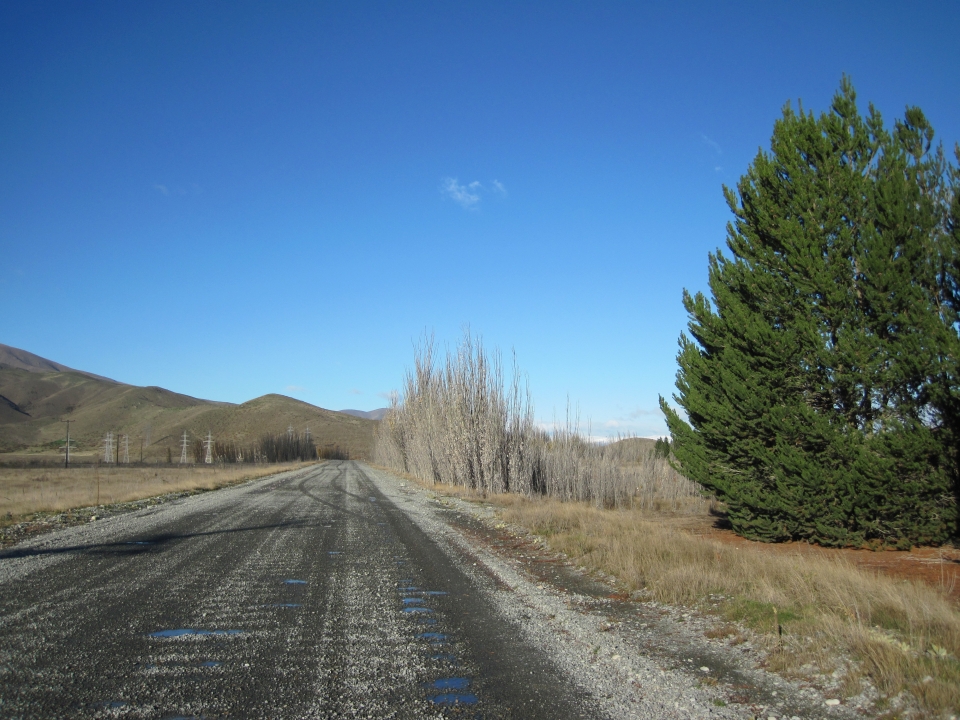
You can see the impact of weed control on the left side of the road compared with where weeds have not been controlled on the right. Image: LEARNZ.
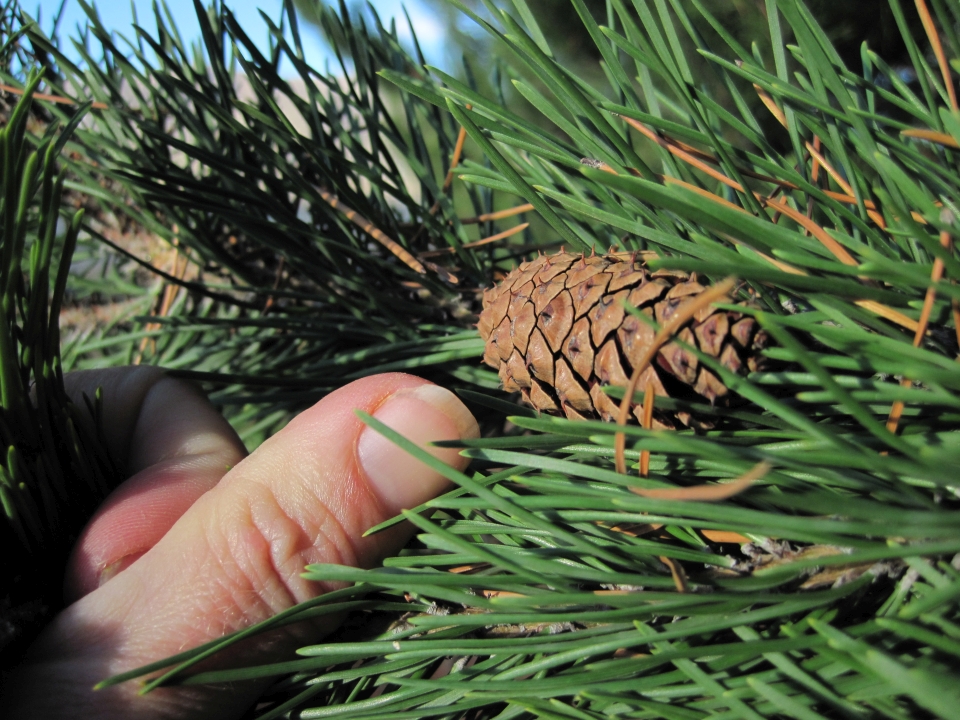
Pine seeds are stored in cones. Do you know what type of pine tree this is? Image: LEARNZ.
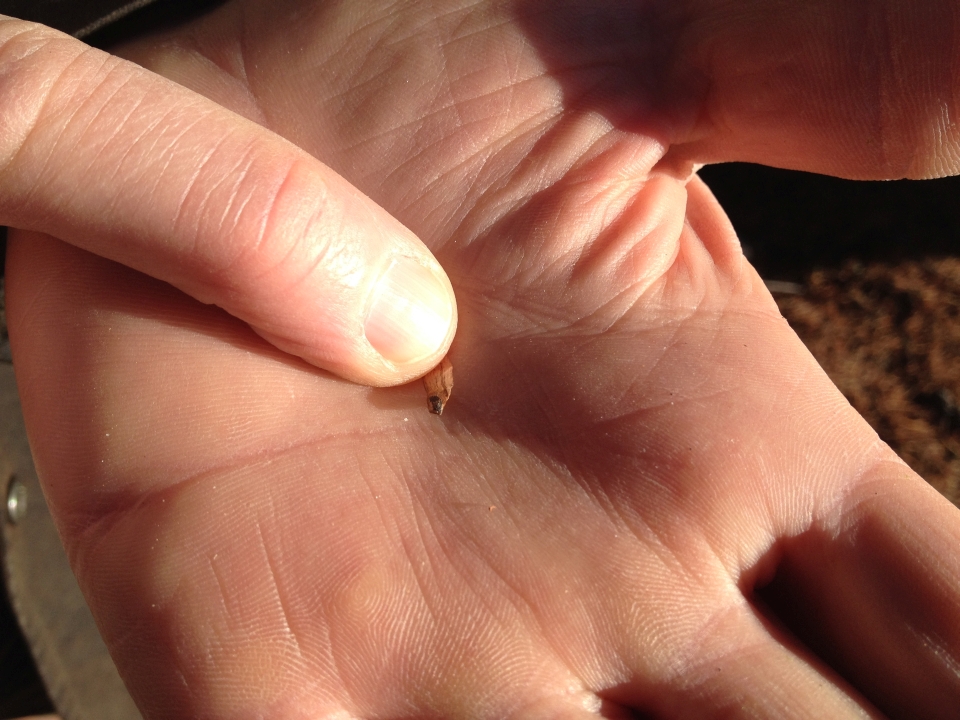
This is a pine seed that is spread by the wind and can travel for several kilometres. Image: LEARNZ.
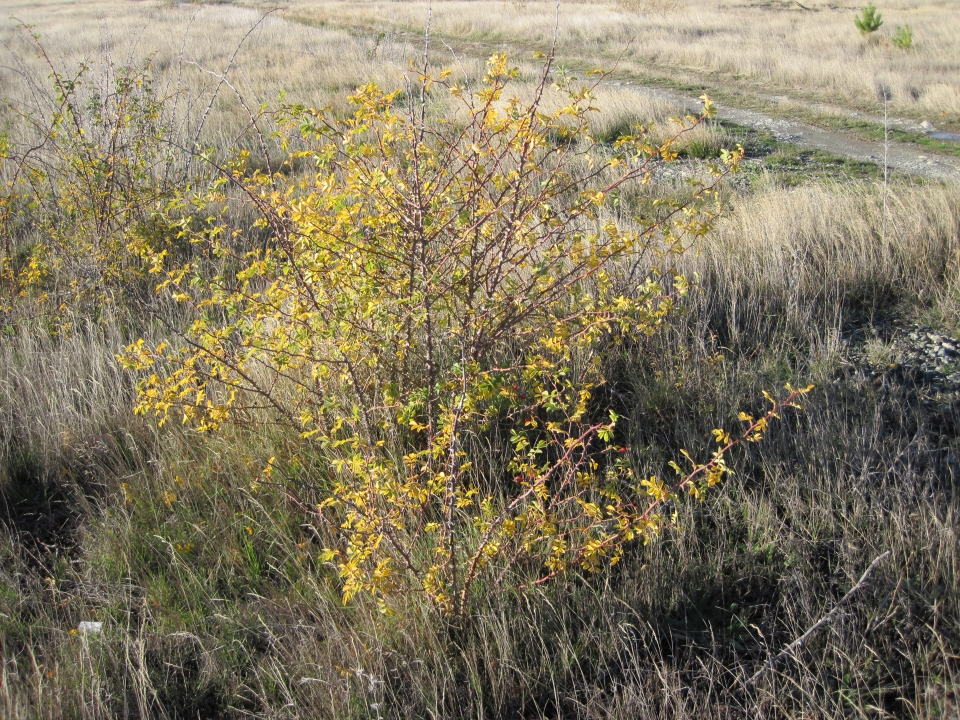
Rosehip is a common weed in the high country. How do you think Rosehip came to be in the high country?
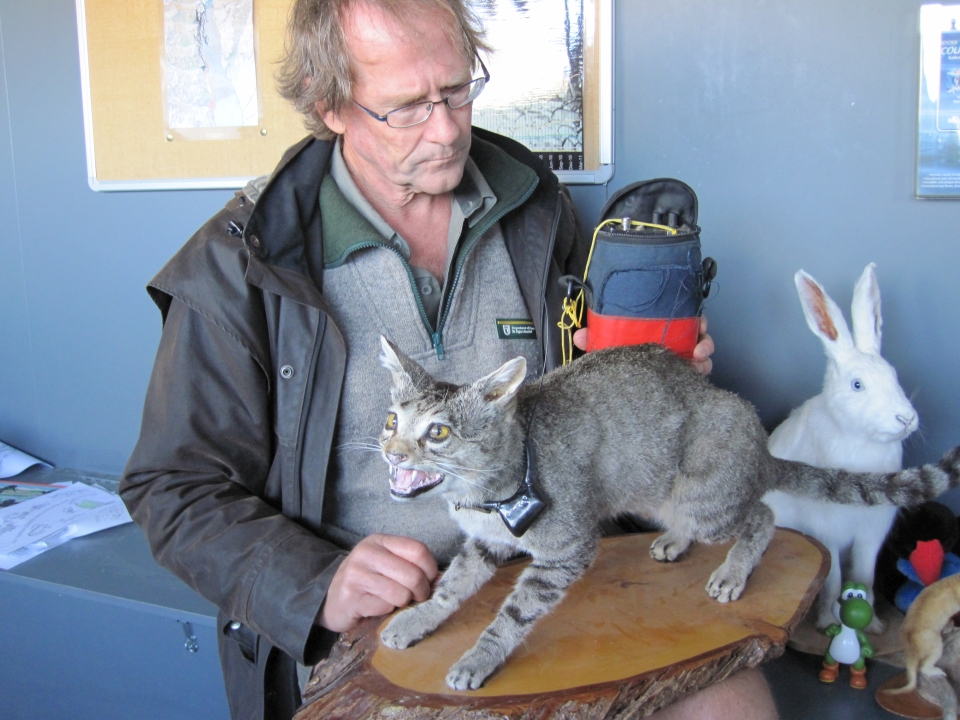
Neil shows you how a tracking collar can be used on a wild cat. What might be some of the challenges of using tracking collars on cats? Image: LEARNZ.
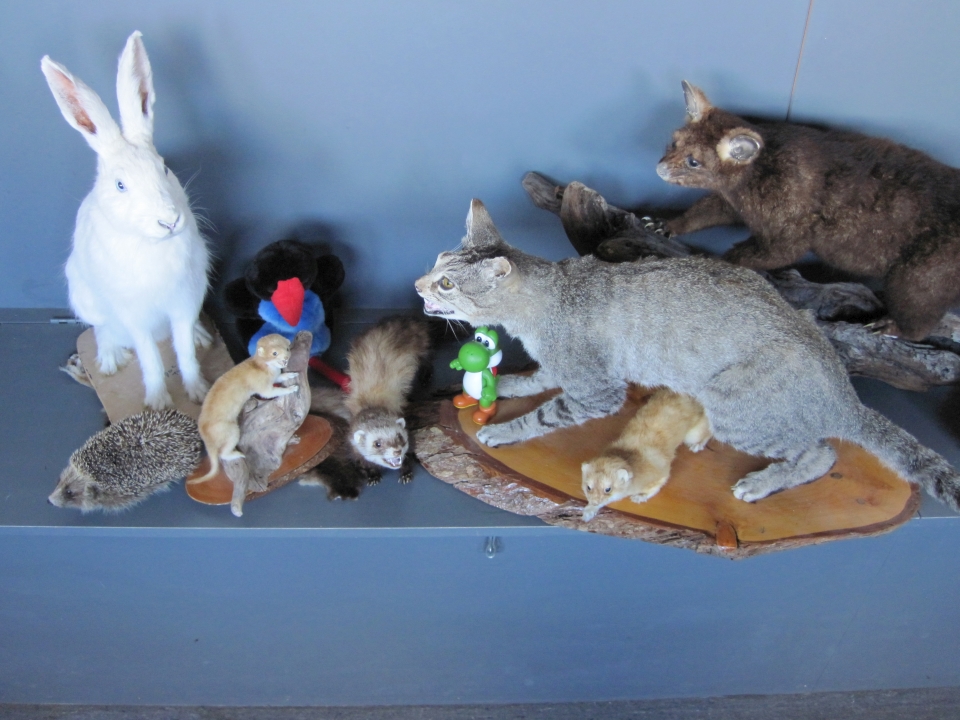
Spot the predators! Can you name each predator? Image: LEARNZ.
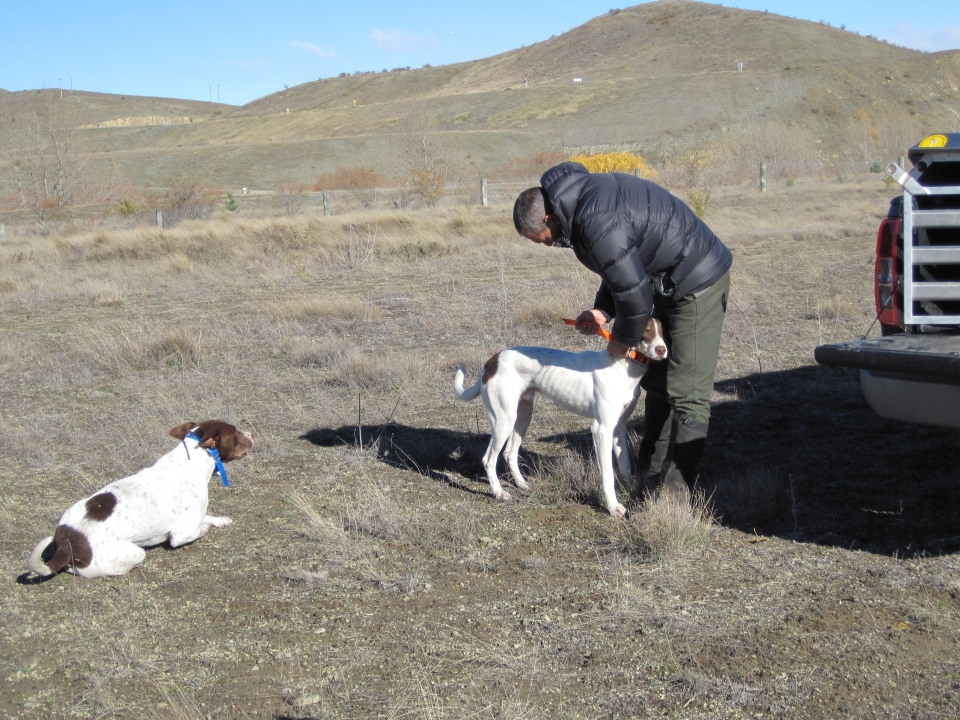
Scott places a tracking collar on his dog. Why are these collars useful? Image: LEARNZ.
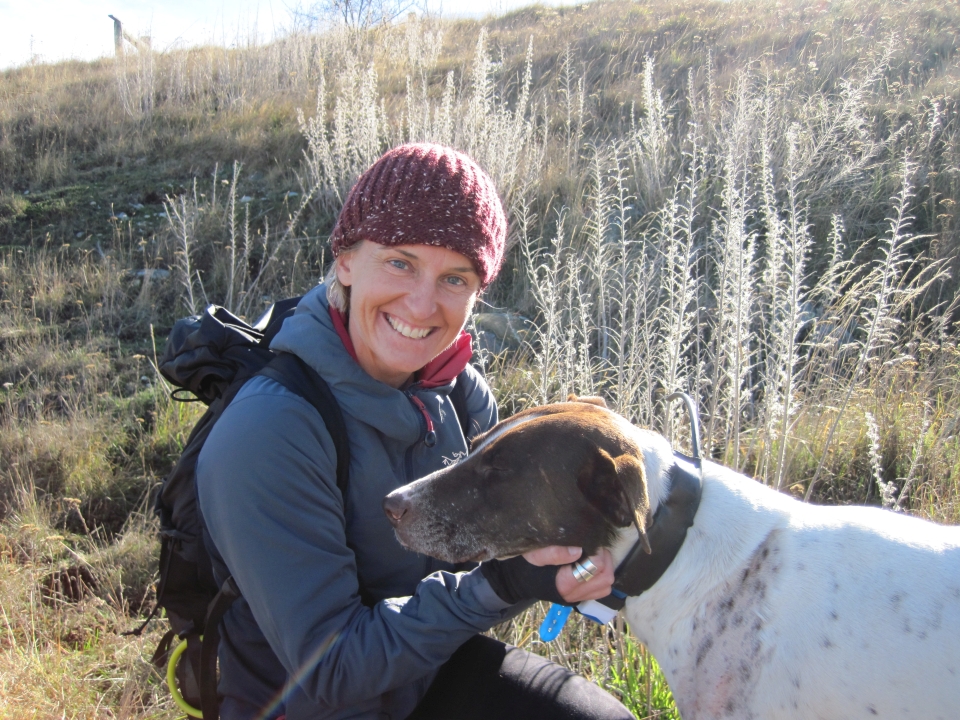
Shelley enjoys some time with Billy Joe, a working conservation dog. What work is Billy Joe involved in? Image: LEARNZ.
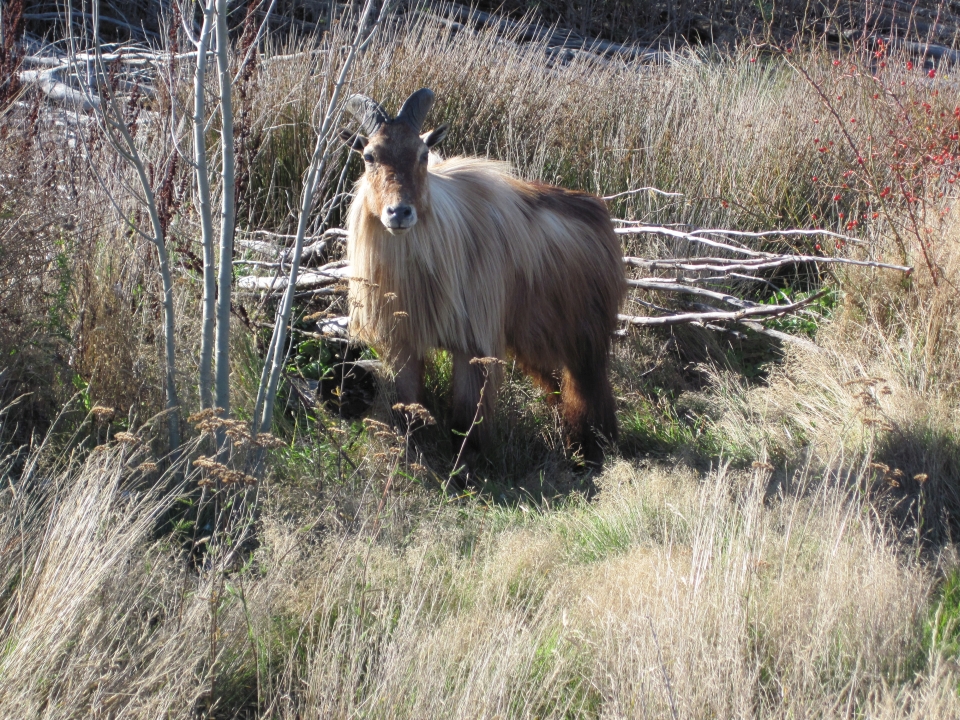
This is a stuffed Himalayan thar. Why are thar a problem in the high country? Image: LEARNZ.
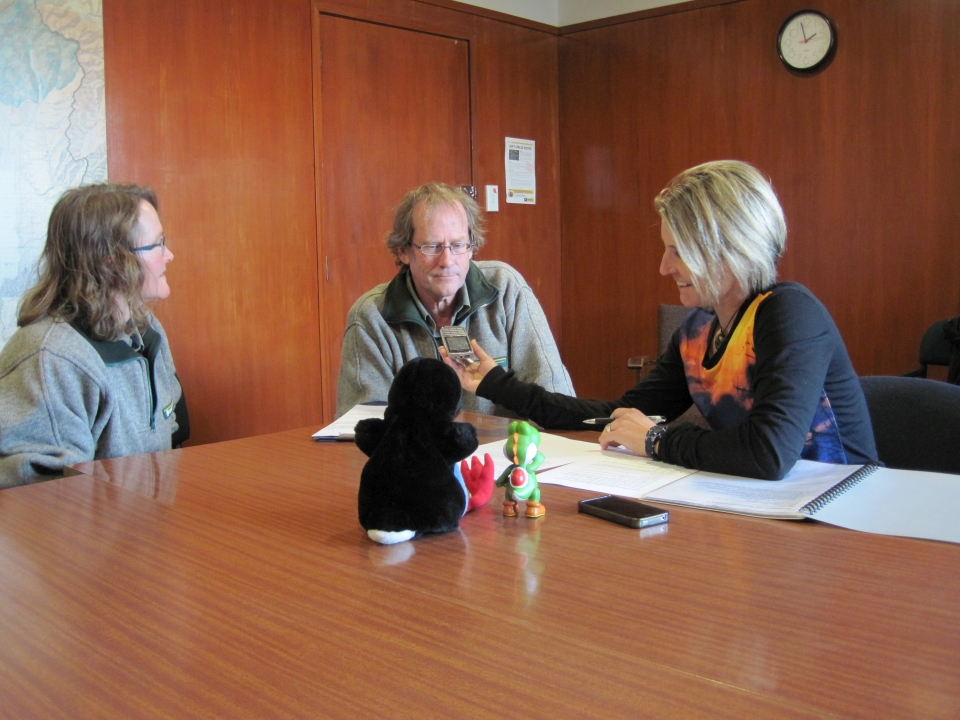
You spoke to St Patrick's School and Christian Renewal School during the second audioconference this afternoon. Image: LEARNZ.